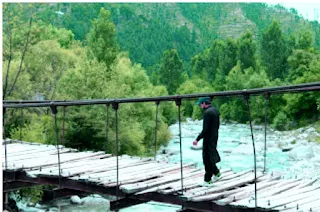DeniSe Welch: A Versatile Talent in the Spotlight
Denise Welch, whose full name is JacQueline Denise Welch, is a British actress, television presenter, and author, known for her impressive carEEr in the entertainment industry. With her distinct voice, commanding presence, and varied roles across television, stage, and screen, Denise has earned a reputation as one of the most versatile and well-loved figures in British show business.
Early Life and Career Beginnings
Denise Welch was born on May 22, 1958, in Newcastle upon Tyne, England. She grew up in the North East of England, and from a young age, she demonstrated a passion for performing. This led her to pursue acting as a career, attending drama school where she honed her craft.
Her breakthrough into the entertainment industry came in the early 1980s when she landed a role in the popular British soap opera Coronation Street. Denise’s performance as the character "Natalie Barnes" garnered significant attention, earning her both critical acclaim and the love of a large audience. She was part of the show for several years, a key period in her early career, and this experience allowed her to Showcase her ability to portray complex, multi-layered characters.
Television Success
Denise's versatility as an actress was soon recognized, and she expanded her television career beyond Coronation Street. One of her most notable roles was as a regular panelist on the daytime talk show Loose Women. Denise became an integral part of the show, where she offered candid opinions on various issues, from current affairs to celebrity gossip. Her openness and honesty, combined with her warm personality, made her a fan favorite.
In addition to her work on Loose Women, Denise has appeared in several other television series, including Waterloo Road, where she portrayed a teacher, and The Red Button. Her ability to shift between comedy, drama, and light-hearted entertainment showcases her range as an actress and presenter.
Stage and Film Roles
Though television made her a household name, Denise Welch’s career also extends to the stage and film. She has performed in several stage productions, demonstrating her adaptability as an actress. Her work in theatre includes performing in productions such as The Vagina Monologues, where she contributed to the show’s success through her dynamic portrayal of the material.
Her film career, though not as extensive as her television work, includes some notable appearances. She starred in the film The Darkest Dawn and participated in a few smaller projects, further expanding her repertoire.
Personal Life and Mental Health Advocacy
Denise Welch's personal life has been the subject of public interest, particularly regarding HER openness about her struggles with mental health. She has been candid about her battle with depression and her experiences with therapy, medications, and self-care. This honesty has made her a key figure in advocating for mental health awareness, helping to remove the stigma surrounding mental illness.
In her autobiography, Pull Yourself Together: I Had to Survive, Denise detailed her personal journey with mental health challenges, offering readers an insight into her emotional struggles and how she overcame them. Her transparency has inspired many people to seek help and prioritize their well-being.
Writing and Authorship
Denise has also found success as an author. Her memoir, Pull Yourself Together, was published in 2013 and became a bestseller. In this book, she shares intimate details about her life, from her rise to fame to her personal struggles. Denise’s writing further cements her authenticity and commitment to using her platform to discuss important social issues.
Family Life
Denise Welch’s family life has been another central aspect of her public persona. She has been married twice, first to actor Tim Healy, with whom she has two children, including the well-known actor Matty Healy of the band The 1975. Denise has always spoken about the importance of family and how her role as a mother and her relationship with her children have been integral to her sense of self.
Conclusion
Denise Welch has made an indelible mark on the entertainment industry through her diverse roles in television, theatre, and film. As an actress, presenter, author, and mental health advocate, she continues to inspire people with her resilience, openness, and talent. Whether in front of the camera or as a voice for mental health awareness, Denise’s legacy as a multifaceted and compassionate individual is undeniable. Her career remains a testament to the power of authenticity and the importance of breaking down barriers, both in entertainment and in real life.





















